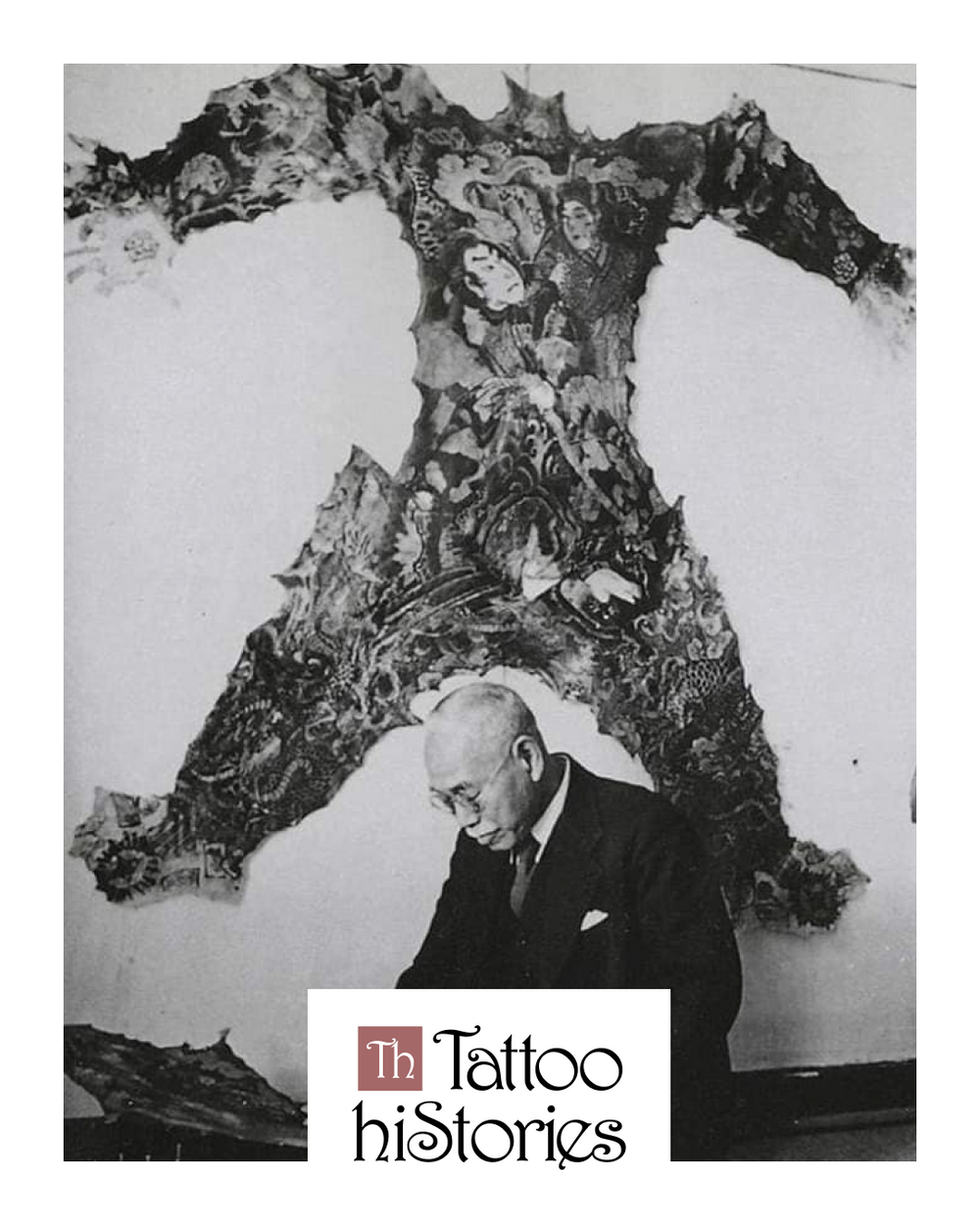Tattoo hiStories: The Skin Collector - Fukushi Masaichi (1878-1956)
“Some people donate their bodies to science. Lyle Tuttle is donating his to art. When he dies, he says it will be shipped to Japan, where they’ll skin it. The hide will then go up on the wall as part of a private collection at the University of Tokyo’s Museum of Pathology.”* - Don Stanley, Sacramento Bee
While researching material for future Tattoo HIStories, we came upon this opening paragraph in a feature article on tattooing, from the Sunday August 12, 1990 edition of the Sacramento Bee, and thought we’d take a quick detour and explore the fascinating story of the University of Tokyo’s tattoo collection, and its founder Dr. Masaichi Fukushi.
Fukushi’s Skin Deep Passion
The collection referred to by legendary tattoo artist/historian, the late Lyle Tuttle, was founded by Dr. Masaichi Fukushi, a Japanese physician, pathologist and Emeritus Professor of Nippon Medical School in Tokyo. Dr. Fukushi was studying moles and the movement of pigment in human skin, when he became intrigued by the tattoos of the people he came in contact with, particularly the traditional Japanese tattoos. In fact, his fascination with tattoos led him to become a passionate collector of tattooed skin.

Dr. Fukushi acquired the skins for his collection while working at the ‘Mitsui Memorial Hospital’, a charity hospital in Tokyo. The hospital served the lower classes, and as tattooed patients died of illness or old age, Dr. Fukushi would perform the autopsies and preserve their skins. He also formed friendships with tattooed citizens of Tokyo and helped them to form the Tattoo League of Japan. The league met in the public bathhouses of Japan to display their body art, and Dr. Fukushi would offer to pay members to get their full body tattoos finished on the condition that they would allow him to harvest their tattoos when they died.

Harvesting Skin Art...
Dr. Fukushi would remove the tattooed skin off of donated bodies and preserve them using one of two different methods of preservation; dry or wet. First the body would be carefully skinned and peeled off, then the nerves and tissue would be carefully scraped off. When using the dry method, the skin would then be stretched out and pinned to dry. The wet preparation method required the skin to be preserved by immersion in either glycerin or formalin.

Wear Your Dreams...
Legendary tattooer Don Ed Hardy is one of the very few Americans to have ever seen Dr. Fukushi’s collection in person. Hardy first visited in 1983 at the invitation of Dr. Masaichi Fukushi’s son, Dr. Katsunari Fukushi, who had taken over the care of the collection. Hardy detailed his visit in his memoir “Wear Your Dreams: My Life in Tattoos”. At the time, the collection included more than 3,000 photographs of tattoos, extensive notes and records from the elder Dr. Fukushi, and over 100 tattooed human skins.

You can also check out the 1987 article about the Fukushi skin collection; ‘Remains To Be Seen’ in Ed Hardy’s ‘TattooTime’ (volume 4, number 1).
Incidentally, the largest collection of human skins can be found at the London's Science Museum’s Wellcome Collection. The Collection has over 300 individual tattoo fragments.
*Note: According to Frankie Harrington’s 2019 interview with Lyle Tuttle for the San Franciscan, Dr. Katsunari Fukushi, attended Tuttle’s 70 Years in Tattooing Retrospective Exhibit in September 2018. Dr. Fukushi measured Tuttle so he could donate his bodysuit to the Japanese institute for preservation and display, however Tuttle later changed his mind. Lyle Tuttle died March 25th, 2019.
References:
Sacramento Bee, Sunday August 12, 1990, Don Stanley, TATTOO: Ink Under the Skin Lives On, As Tattooists Elevate an Ancient Art Form to Loftier Levels
Don Ed Hardy, Remains to be Seen, in Tattoo Time, Volume 4: Life and Death Tattoos, (1987).
Vice Magazine, June 29 2015, Simon Davis. Human Pelts: The Art of Preserving Tattooed Skin After Death
Photo credits included when available.









